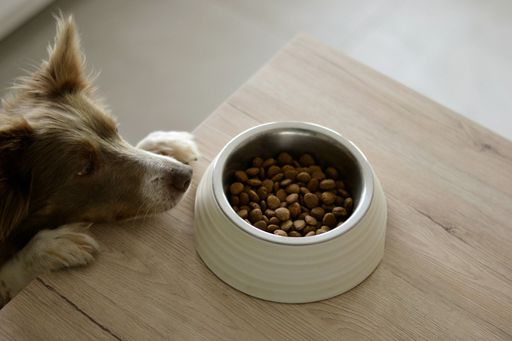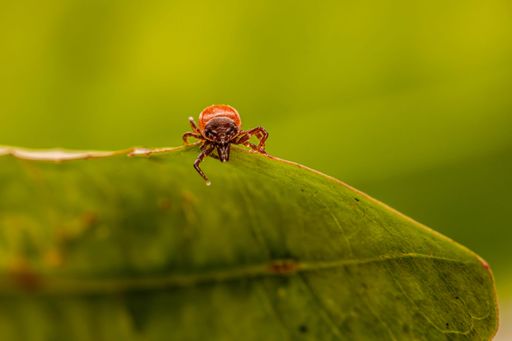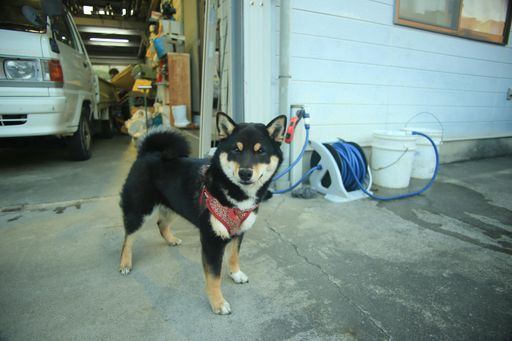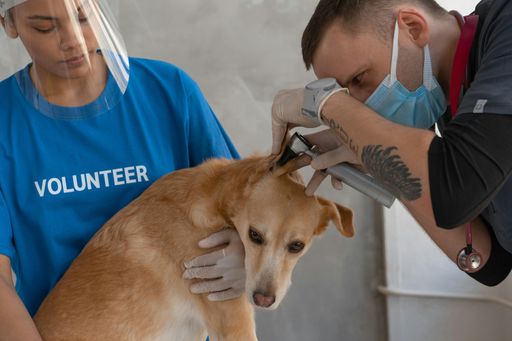Fatness in dogs is becoming more and more common. Owners who have overweight dogs wonder why they came to be this way and how they can help their dog lose weight. Unfortunately, the owners often pay attention to the problem only when the dog is already suffering from various forms of obesity, and because of this, the pet has already gotten diseases associated with its excess weight.
The main reasons for an overweight dog
- binge eating
- disorders in the dog’s endocrine system
- the presence of parasites
- lack of physical activity and a sedentary lifestyle
- poor diet
- genetic predisposition to fatness in some breeds
In this article, there are no complicated and expensive tips; they are available to absolutely anyone, even those who are far from places where their dogs can train or play sports. The main thing is not to lose weight, but to rebuild the dog’s lifestyle and review its diet!
1. Sports for lazy ones
In fact, you do not need to change your lifestyle. All that is required of you is a little time and desire to engage with the dog. Look at what your four-legged friend likes most.
You are lucky! The only thing you need is to find a somewhat hilly terrain and stand on top of the hill – and of course in a safe place, away from cars and roads. Start having fun and throw the ball down with enthusiasm and as soon as the dog grabs it; then squat down, pat your knee, and call the dog by name or by saying, “carry the ball.” As soon as the ball is delivered, praise the dog and offer to exchange the ball for a piece of the most delicious delicacy when finished.
Before the walk, the dog should be quite hungry. Let your canine companion take a little break and then throw the ball again. Do not throw it often, and after a few throws, switch the dog to something more pleasant. Smoothly bring this exercise up to ten times, and more. In order to awaken the dog’s interest, teach it at home to play with balls and dumbbells in which you can hide a treat. Do not be discouraged if it doesn’t go smoothly right away. Sometimes it is possible to whip up a dog’s interest by racing the dog to the ball. You can pretend that you get a snack from the ball.
- The dog loves to dig holes.
This is just great! The only thing you need to make clear is where it is appropriate to dig, and where not. So, the field, the forest, and the sand is a great place, but mother’s favorite rosebush must be off limits! 🙂
Training takes place on the principle of marking the action, using the commands “dig” and “stop.”
Let the dog stretch and jump a little for the cherished toy. Do not forget to encourage its interest and reinforce success.
2. Almost sportsmen
So, it took about a month, and you have gotten used to training smoothly. Try to divide the time of the walk into three parts: training and sports, playing with you, and time with other dogs. Now you are ready for more serious exercises!
- Go skiing.
For this you need the most simple recreational skis. No special skills are required. Just try in the winter one or two times a week to get out into the woods and make the dog run ahead, making your way, and go off the trail often and ski through the field and deep snow.
- If there is no snow in your region at all, you can get into Nordic walking.
Of course it is good for this purpose to get out to a forest or park, but a few laps around the stadium will be a big help in matters of losing weight for your pet.
3. Make a plan for losing weight
How do you make your pet lose weight? It is best to go to the vet with your pet and draw up a plan of action. First, the veterinarian will examine the dog and do tests to eliminate serious causes of obesity and endocrine disorders. Then the vet will calculate the number of calories needed by the dog, determine the quality of the food, and advise on the level of physical activity needed. The amount of food is calculated at the rate of 30 calories per kilogram of the dog’s weight.
4. Food for the dog with extra weight
The main factor in weight gain, in addition to the hydrodynamic characteristic of urban animals, is nutrition. For dogs who eat dry food, it is necessary to choose the composition very carefully. Many owners make a mistake, focusing on the dosage given on the package of the dog food. This is not a rigid rule to follow – there are only approximate theoretical norms, and it is necessary to focus solely on the condition of the animal, physical activity, and risk factors in terms of obesity, such as castration, adulthood, and living conditions (apartment, aviary) and time of year.
5. Health
In addition to these factors, it is necessary to check the health of the dog. In general, it should be the first item in our list of recommendations. The well-functioning work of the pancreas, a sufficient amount of enzymes, the acidity of the gastric juice, the state of the gastrointestinal tract, and the thyroid gland and hormonal levels are very important.
6. Don’t give your dog table scraps
This is perhaps the most common mistake. Cheese, bacon, sausages, and most fruits are strictly contraindicated for dogs. It is impossible to feed animals that are in adulthood with dairy products, because the enzyme that breaks down milk and other dairy products has already been lost. Using this product in large quantities may cause diarrhea and other gastrointestinal ailments. Food from the table, as a rule, is spicy, salty, and peppered, and condiments are not healthy for animals.
7. Resist the begging look
It is important to remember that an adult dog should receive food two times a day and at certain hours. Additional food between the main meals is unacceptable and can lead to problems with excess weight. If the dog begs for each piece, the easiest option is to be patient: do not give in! And it is important to put your pet somewhere else while you eat.
8. Natural or processed food?
Animals eat for energy, which is necessary for life. If we can make a full-fledged diet with natural foods, it is recommended, but not always possible. Therefore, I recommend ready-made rations.
9. Avoid harmful food
Chocolate, for example, cannot be given to dogs categorically, especially dark chocolate, with its high cocoa content (it stimulates the body, leading to cramps and even death). Do not give dogs raisins, eggplants, onions, or garlic.
10. Losing weight after sterilization
Weight gain after reproductive surgery is caused by changes in hormonal levels. It is difficult for a dog to lose weight after sterilization, so it will be important to prevent further weight gain. For this:
- The volume of a single portion should be reduced.
- Special ready-made food is used, which takes into account the parameters of the breed and weight.
- The dog must lead an active lifestyle for the rest of its life.



















